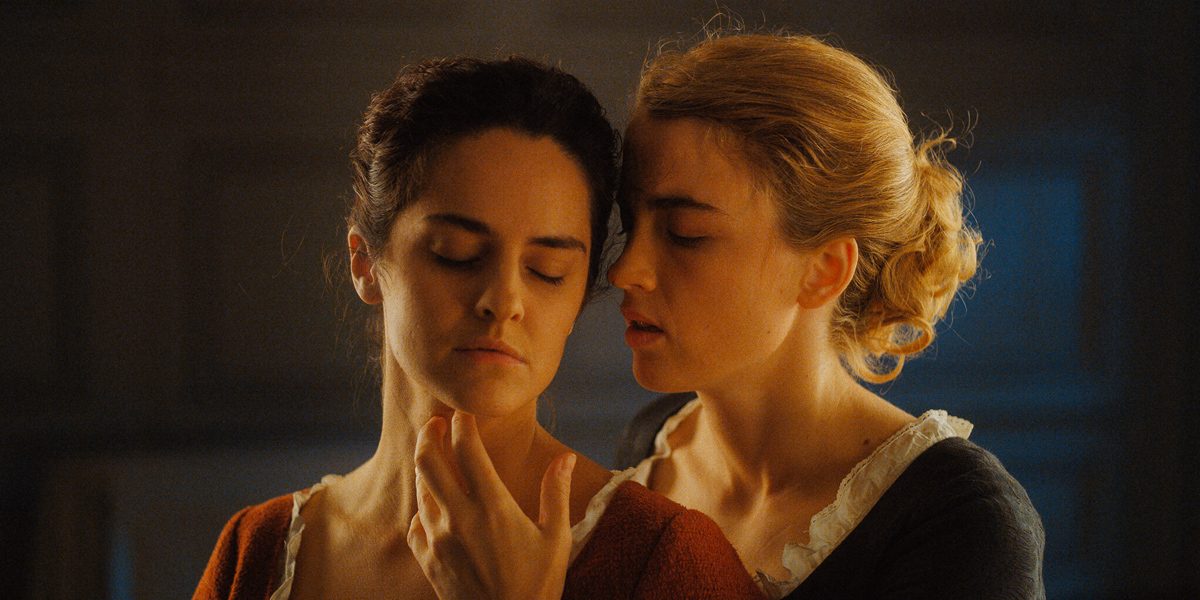About midway through “Portrait of a Lady on Fire,” three women sit in the living room of a house. One of them is reading the tale of Orpheus and Euridice as the other two listen. At the end, they stop to contemplate the implications of the story, to make sense of Orpheus’ infamous inability to be strong for the life of his loved one. Except, the interpretation they find is far removed from typical readings. It’s more thoughtful, and it’s more empathetic, and it is also more fanciful and it’s a key distillation of the tenderness that consumes “Portrait of a Lady on Fire”. The lesbian drama, directed by Céline Sciamma, won the Queer Palm and the Best Screenplay prizes at the Cannes Film Festival earlier this year, and premiered at the Toronto International Film Festival (TIFF) at the end of last week. It’s a story of love in a harsh situation, likely doomed, but beyond this what strikes immediately about “Portrait” is the way it values emotions, expressions and feelings. And, of course it does, for this is the tale of an artist.
At the end of the Q and A after the premiere, Sciamma spoke of her desire to make a film about a female artist, so often marginalised in the history of that profession. She her idea for the film sprang from that thought and she created a fictional woman artist to take us through the film. The artist is Marianne, a young painter following in her father’s footsteps, who makes her way to a remote location to paint the portrait of a noblewoman’s reticent daughter, who is soon to be wed. Except, this portrait is a secret. The subject must not know about it. So Marianne must get close to the enigmatic Héloïse under the guise of being a lady-in-waiting, and from this subterfuge her painting must develop. The two fall in love. This romance is the log-line of the film, and subject of the film’s beautiful poster, even though it takes some time to develop. What follows for the two-hour film is the development of that tentative relationship, told in flashbacks from Marianne’s place as an older artist.
The film’s structure is incredibly straightforward to the point of potential triteness except that for every familiar evocation of romance on film Sciamma is precise and incisive about the way she places her characters in relation to each other. “Portrait” is a character study, but it is also an unceasingly thoughtful look at the lives of women at the end of the 18th century, interrogating norms, conventions, limitations and possibilities. Sciamma considers and then reconsiders the women at the centre of the story, and not just the romantic pair. That scene where Orpheus is invoked sees the pair joined by a third, Sophie, a young maid in the house. For a long stretch of the film’s middle, the romantic pair and Sophie navigate their lives as young women as they are left to their own devices. They read mythology, they play cards, they take walks as the film reveals its interest in women as individual characters, with value beyond being objects of affection.

In this way, the film slyly becomes a quasi-coming-of-age tale as Marianne’s love story must complement her recognition of her own talents as a painter. It feels quietly revolutionary the way Sciamma argues that for Marianne love does not counter artistic pursuits, but instead inspires, subverting the dichotomy of a divide between artistic intellectualism and emotional weakness. Noémie Merlant, as Marianne, becomes less opaque and remote as the film goes on, presenting a woman we recognise as immediately familiar. Adèle Haenel, as Héloïse, shows up late in the narrative but by the end she matches Merlant’s depth, creating a rapport that never feels lopsided. The balance in their chemistry is a manifestation of Sciamma’s own need to present these women not as competitors but as a pair in sync. Their relationship, like the painting Marianne must complete, depends on balance.
“Portrait of a Lady on Fire” is suffused with its knowledge and its nod to arts, consistently in search of that artistic balance. Naturally, painting is the most obvious and this is well manifested in the film’s lush photography. Cinematographer Claire Mathon imitates elements of expressionism as she uses darkness and moonlight and candlelight to present a lush screen for the story to breathe in. The film is beautiful, almost too much at times as our senses are almost suffused by the colours bleeding into each other. Vivaldi’s “Summer” makes a critical appearance at two key junctures in the film, in both cases evoking an emotional response from a particular character. Sciamma, she writes and direct the film, is working on that same instinctual level. The emotions of the film are always close to the surface, confident and earnest and naked. This is important—that Céline Sciamma privileges romance as a genre worthy of value and thoughtfulness is important and that this period romance depicts a lesbian romance with tenderness and care is even more significant. “Portrait of a Lady on Fire” recognises that within its love story the women at the centre (and the women around them) are nuanced people who contain multitudes.




